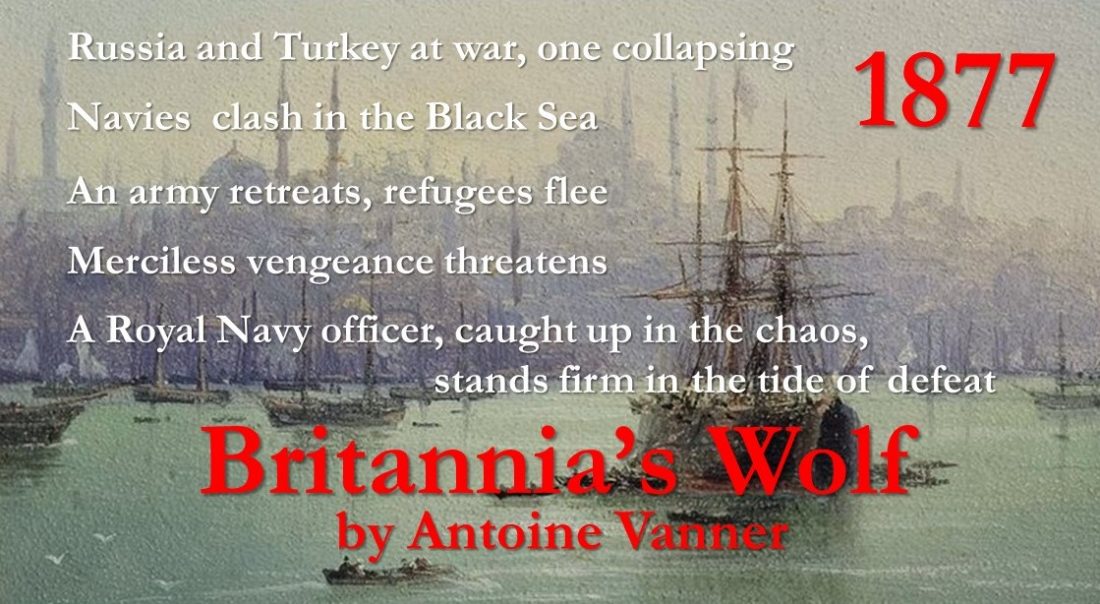Training Tragedies: the losses of
HMS Eurydice and HMS Atalanta
.jpg)

At first glance the picture of a frigate such as HMS Eurydice, as above, immediately evokes visions of single-ship actions of the Napoleonic period. It is therefore all the more surprising that this ship was still in service in 1878 and that her destruction was witnessed by the young Winston Churchill who would live on to oversee development of Britain’s nuclear deterrent. HMS Eurydice’s story, and that of her successor, HMS Atalanta, are some of the most tragic ever to occur in peacetime service in the Royal Navy.
This begs the question of “Why were such vessels still in service when steam was already established as the most reliable and efficient method of propulsion?”

 Armoured-cruiser HMS Warspite of 1884 – her sailing rig was removed
Armoured-cruiser HMS Warspite of 1884 – her sailing rig was removed
early in her career and she served thereafter under steam power only

 Not only the Royal Navy retained sailing rigs. Here is the American protected-cruiser USS Atlanta of 1884
Not only the Royal Navy retained sailing rigs. Here is the American protected-cruiser USS Atlanta of 1884
The answer is that warships in all navies carried sail as well as steam power right up to the end of the 19th Century. Boilers were still inefficient, though improving, and their furnaces were ravenous for coal. For long distance cruising, away from easy coal supply, retention of sail made sense, even though the presence of masts and yards was likely to be a major point of vulnerability in combat. As innovations in boiler and engine design improved efficiency, and reduced coal demand, the need for sail decreased. In the 1880s sailing rigs were phased out for major vessels but even thereafter retention continued to make sense through the 1890s for smaller craft on remote stations. Typical examples were small, slow gunboats such as those of the Redbreast class, powerfully armed with six 4-inch breech-loaders and ideal for colonial service.
.jpg)
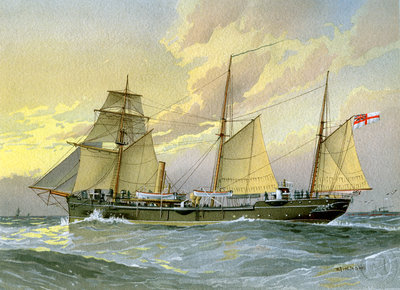 HMS Thrush – a Redbreast class gunboat of 1889
HMS Thrush – a Redbreast class gunboat of 1889
Training of officers and men in managing sail as well as steam was therefore of the utmost importance. For many years after steam had replaced sail for all operational purposes there was a strong body of opinion remained that mastery of sail, and of “work aloft”, was essential for character-building, even when this meant training on masts set up on land.
This is the background to the retention of HMS Eurydice as a Royal Navy training ship. She had been built in 1843 as a very fast 26-gun frigate designed with a very shallow draught to operate in coastal waters. Wholly sail-dependent, her design and armament were little different to those of the frigates commanded by captains such as Pellew and Cochrane some four decades earlier. Over the next eighteen years she saw service worldwide, including an uneventful assignment to the White Sea during the Crimean War. She was converted to a stationary training ship in 1861 and remained in this role until re-commissioned as a sea-going vessel in 1877. HMS Eurydice departed on a three-month training cruise to the West Indies in the November of that year, carrying 319 crew and trainees.

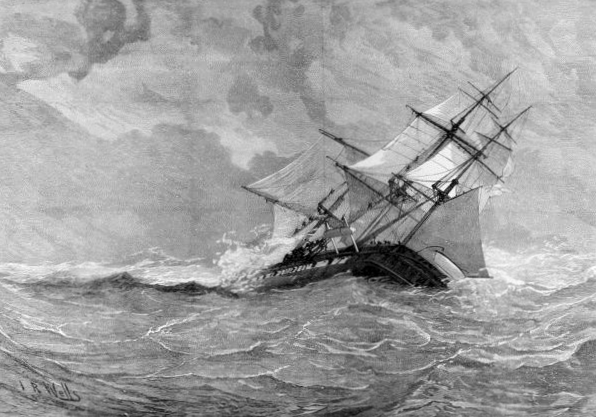 Contemporary artist’s impression of HMS Eurydice capsizing
Contemporary artist’s impression of HMS Eurydice capsizing
The cruise appears to have been uneventful. A fast, 18-day, voyage from Bermuda brought HMS Eurydice back to the Isle of Wight by March 24th 1878 prior to entering Portsmouth. At this point she was engulfed in a heavy snow storm and capsized and sank. There were only two survivors as those not brought down in the ship itself died of exposure in the freezing water. Her captain, Captain Marcus Hare, went down with his ship after ordering every man to save himself and then clasping his hands in prayer. The wreck was in shallow enough water for the masts to protrude and it was refloated later in the year. It is not surprising however that this old wooden vessel was past repair and she was accordingly broken up. The subsequent enquiry held her officers and crew blameless and found that the disaster had been caused stress of weather. There was however some concern expressed on the suitability of HMS Eurydice as a training ship because of known concerns as to her stability.

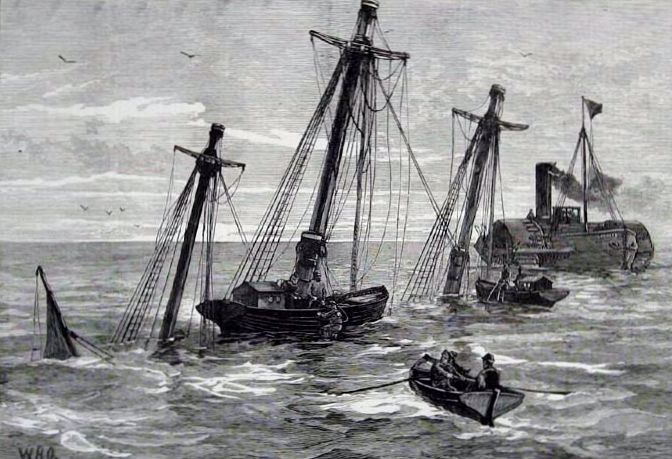 The remains of the Eurydice, as Churchill remembered her over five decades later
The remains of the Eurydice, as Churchill remembered her over five decades later
Winston Churchill, who was four at the time, was at Ventnor on the Isle of Wight and he witnessed the tragedy. It obviously made a lasting impression on him, as he recounted fifty-two years later in his memoir “My Early Life”:
“One day when we were out on the cliffs near Ventnor, we saw a great splendid ship with all her sails set, passing the shore only a mile or two away… Then all of a sudden there were black clouds and wind and the first drops of a storm, and we just scrambled home without getting wet through. The next time I went out on those cliffs there was no splendid ship in full sail, but three black masts were pointed out to me, sticking up out of the water in a stark way… The divers went down to bring up the corpses. I was told and it made a scar on my mind that some of the divers had fainted with terror at seeing the fish eating the bodies… I seem to have seen some of these corpses towed very slowly by boats one sunny day. There were many people on the cliffs to watch, and we all took off our hats in sorrow.”

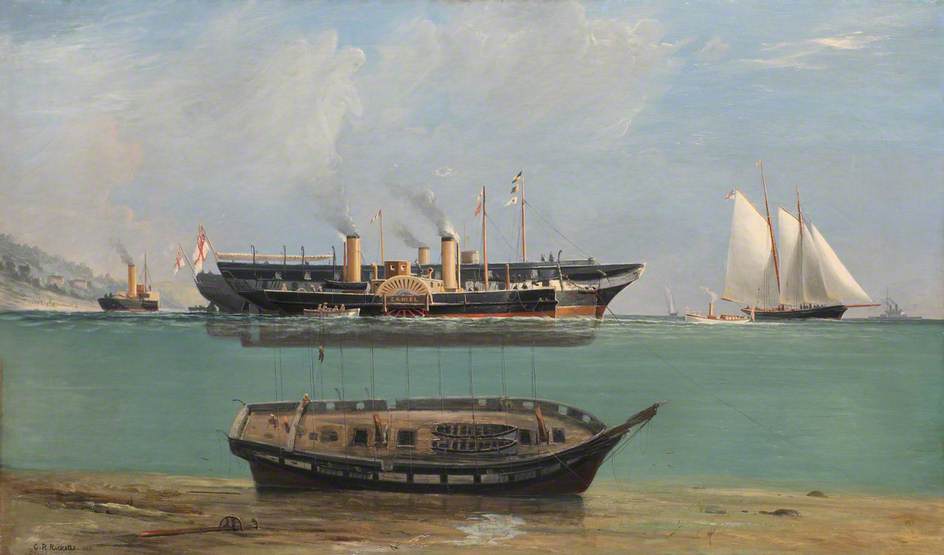
Contemporary illustration of salvage efforts.
Note diver (tiny dot) being lowered towards the quarterdeck

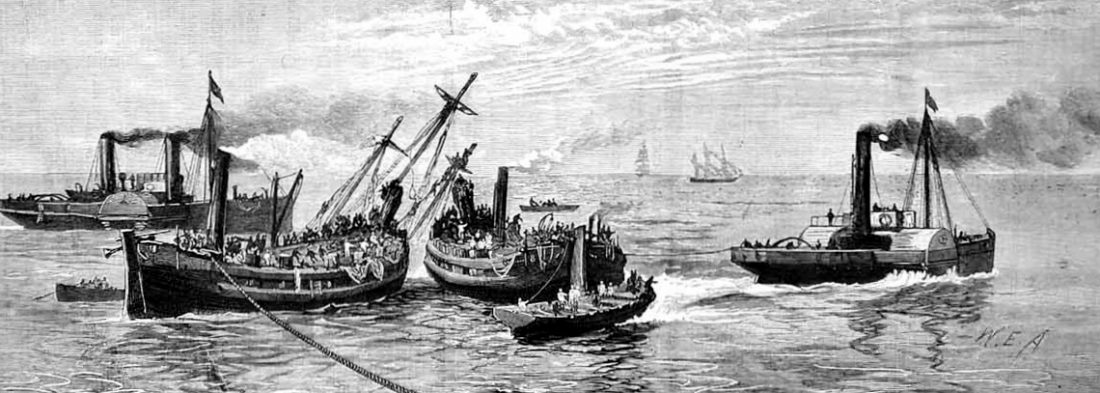 Salvage operations in progress
Salvage operations in progress
The poet Gerald Manley Hopkins was sufficiently moved by the tragedy to write a very powerfully on “The Loss of the Eurydice”. Space precludes copying his poem in full here but the following verses are especially memorable:
They say who saw one sea-corpse cold
He was all of lovely manly mould,
Every inch a tar,
Of the best we boast our sailors are.
Look, foot to forelock, how all things suit! he
Is strung by duty, is strained to beauty,
And brown-as-dawning-skinned
With brine and shine and whirling wind.
O his nimble finger, his gnarled grip!
Leagues, leagues of seamanship
Slumber in these forsaken
Bones, this sinew, and will not waken.
It is normal – today more than ever – to state solemnly after every disaster that “Lessons have been learned” though in practice this seldom seems to happen. This was especially the case in the aftermath of the Eurydice catastrophe. The Admiralty proceeded to replace her with HMS Juno, another 26-gun frigate of identical tonnage but slightly less radical hull-lines, built in 1844. She was renamed HMS Atalanta and she made two successful training cruises to the West Indies before disappearing at sea in 1880 with the loss of all 281 crew and trainees while en route from Bermuda to Britain. It was presumed that she sank in a powerful storm which crossed her route a couple of weeks after she sailed. A gunboat HMS Avon did however report that near the Azores “she noticed immense quantities of wreckage floating about… in fact the sea was strewn with spars etc.”

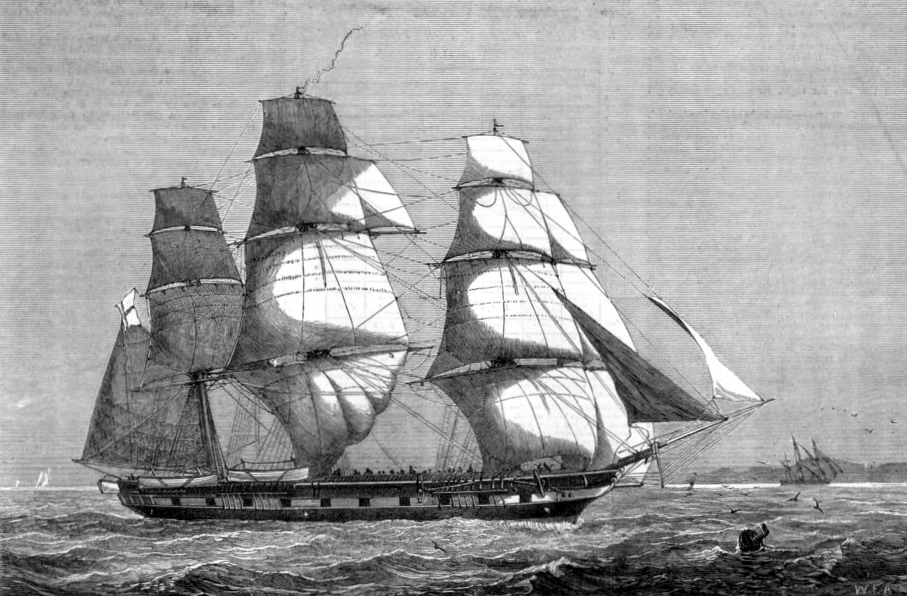 HMS Atalanta
HMS Atalanta
Investigation of the disaster was hampered by lack of evidence but a former crew member stated that “she rolled 32 degrees, and Captain Stirling is reported as having been heard to remark that had she rolled one degree more she must have gone over and foundered. The young sailors were either too timid to go aloft or were incapacitated by sea-sickness.” The witness added that many “hid themselves away” in such circumstances and “could not be found when wanted by the boatswain’s mate.”
The most devastating verdict on the disaster was delivered by The Times, then at the height of its prestige. It denounced “the criminal folly of sending some 300 lads who have never been to sea before in a training ship without a sufficient number of trained an experienced seamen to take charge of her in exceptional circumstances. The ship’s company of the Atalanta numbered only about 11 able seamen, and when we consider that young lads are often afraid to go aloft in a gale to take down sail… a special danger attaching to the Atalanta becomes apparent.”
Both tragedies – claiming 600 lives in two years – shook public confidence in the Royal Navy. A new breed of professional was however emerging, men who understood the demands and opportunities of new technology. Chief among these officers was to be Sir John Fisher, later Lord Fisher, who would create the Dreadnought navy that Britain took into World War 1. It is therefore all the more ironic that one of the officers to lose his life on HMS Atalanta was his younger brother, Lieutenant Phillip Fisher.

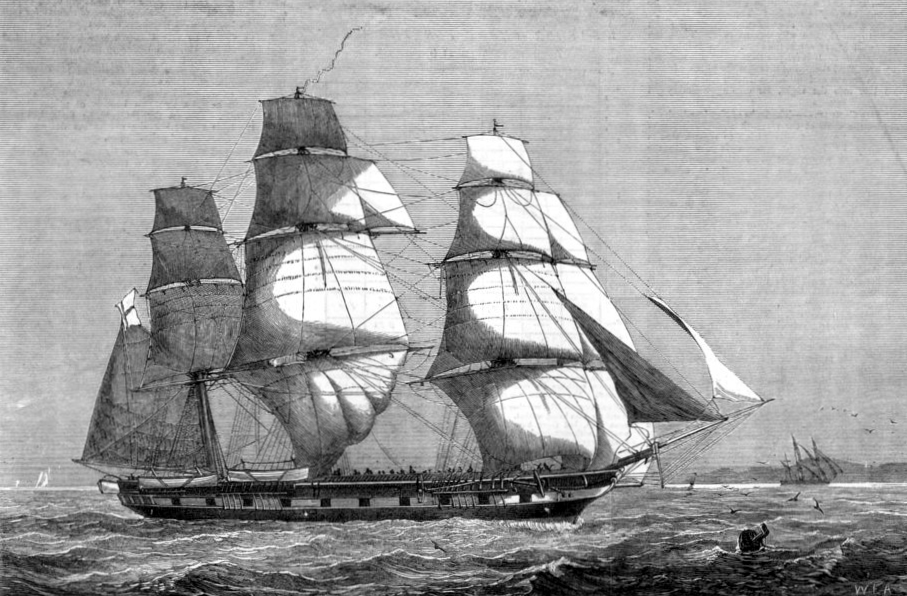 HMS Eurydice under sail
HMS Eurydice under sail

